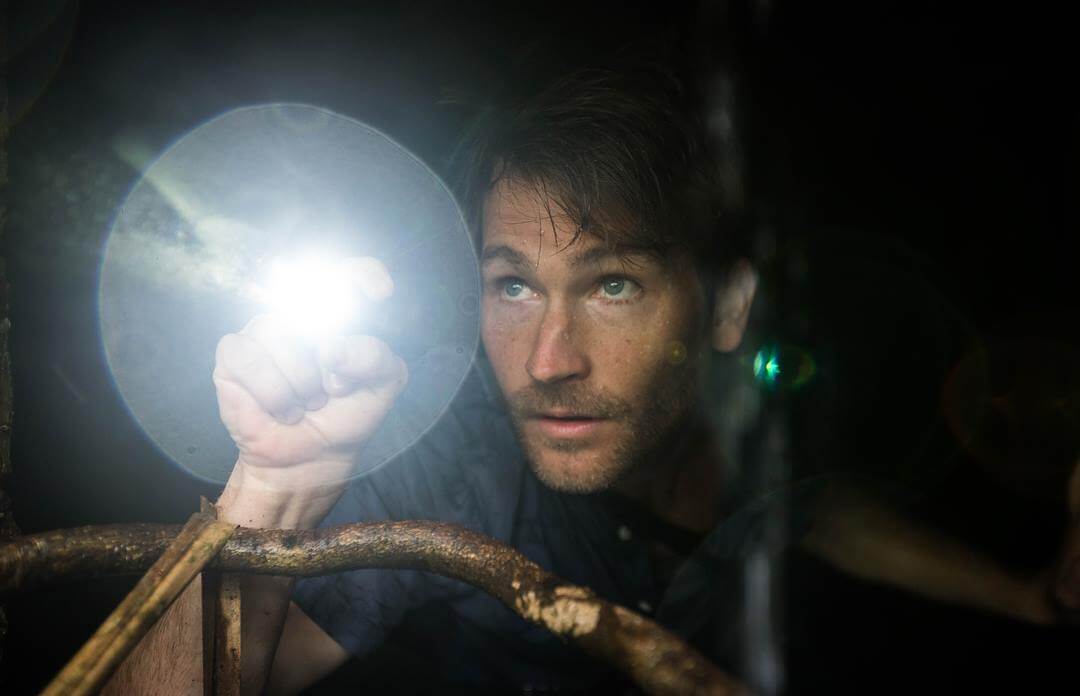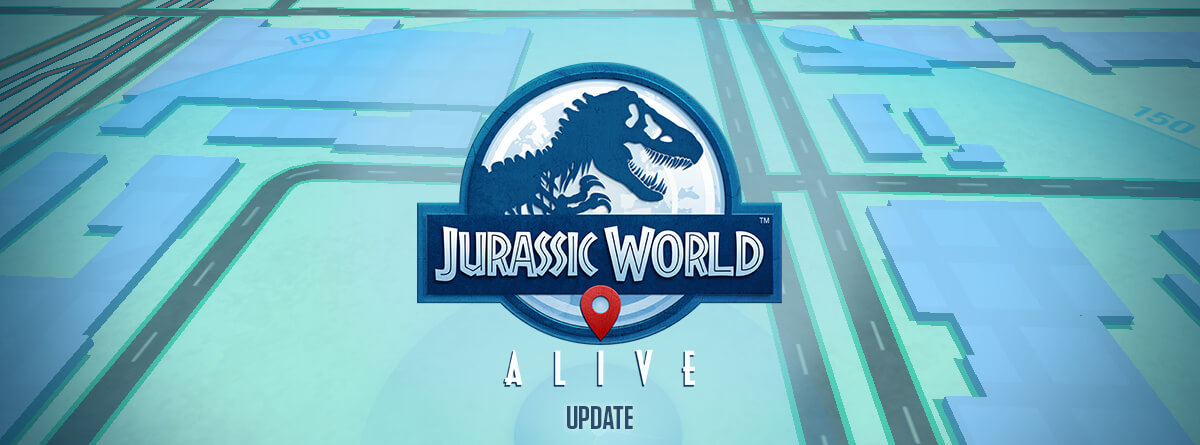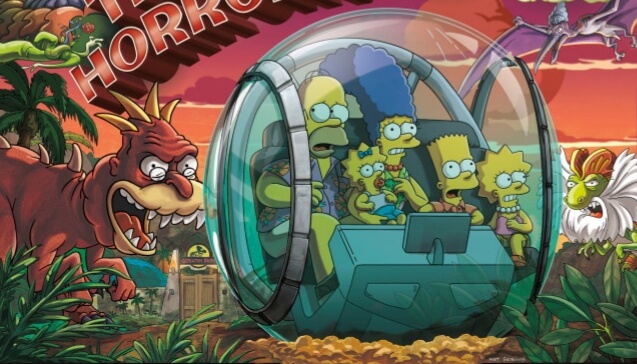Velociraptor is a species that needs no introduction to Jurassic fans, its identity seared into our imaginations as the ultimate apex predator birthed from InGens labs. However, as prominent as the species of dinosaur is in the Jurassic Park films, it is often shrouded in mystery, and defined by complex behavioral traits.
During the Hammond era at least one distinct subspecies of Velociraptor was created, and went on to thrive on Isla Nublar & Sorna after the fall of the park. In the Masrani era, a new Velociraptor program was spawned, and it eventually gave birth to many animals, though only four have been featured in the films. The distinctive V.2 subspecies of Velociraptor as seen in Jurassic Park 3’s origin remains undetermined, and could have been created in either era.
The aim of this article is to take an in-universe look at and identify the many subspecies of Jurassic World Velociraptor, and even attempt to discern what’s left living post the Sibo eruption.
About

V.2 male and female Velociraptors
The Velociraptor of fossil record was a species of dinosauria that lived roughly 75 to 71 million years ago during the latter part of the Cretaceous Period, in and around Mongolia. It was one the first species to be revived by InGen in 1986 through their De-extinction process [Note: Masrani Global initially reported it was the first – their records later changed to say Triceratops was]. They were planned to be exhibited at Jurassic Park before its abandonment but were later revived for Project I.B.R.I.S. as part of a research program to test their intelligence for real-world applications.
It’s theorized due to drastic physical differences, InGen’s Velociraptor is misidentified, and cloned not from its namesake but rather Deinonychus or Utahraptor.
There are three distinct variations of Velociraptor which were cloned by InGen, not counting the sexual dimorphism seen within each individual version. However, despite the surface level variations, each sub-species remains relatively similar in terms of physical attributes. Each species is roughly 6 feet tall, 13 feet long and weigh over 350llbs. They’re each covered in taut, leathery skin not unlike that of a Komodo Dragons, with degrees and variation seen between subset and sexes.
Notably, they feature a 6 inch retractable sickle “killing claw” on the inner toes of each foot, which is one of the animals most signature deadly weapons. While the skull structure varies between each subset, they all feature a pronounced orbital socket with distinct antorbital fenestra ridges. Much like many modern reptiles, these animals mouths were lined with a strong lip structure.

V.1 female Velociraptor
Agile and remarkably strong, Velociraptors are incredible jumpers and can reach speeds of up to 50-60mph in the open.
However, the Velociraptor’s most remarkable attribute is their intelligence and social structure. Purportedly the second most intelligent species on the planet (after mankind), Velociraptor intelligence surpasses that of Chimpanzees and Dolphins. While incredibly aggressive, they are also very social animals with a complex pack dynamic. Like an inverse of a pride of lions, Velociraptors are typically observed with one or a few females leading the pack, with males making up the majority of the population.
Velociraptors typically stay near their nest, and venture out further to hunt – though they have been observed leaving their territory if they still perceive previous intruders as a threat. Velociraptors are particularly defensive of their nests and eggs. The position of ‘Alpha’ within the pack is a very important part of their dynamic, and is typically respected. However, the animals have been known to fight amongst themselves to earn that spot – and those fights can often prove deadly.
Each of the three raptor variations seemingly share the same ‘language’, displaying a complex and unique series of screeches, barks, growls and hisses. Further communication methods include general body language, and the tapping of their killing claws.
Velociraptor Version 1.0
This subset of Velociraptor is not only the first version of raptor cloned by InGen, but also one of the first ever successful dinosaur species brought back via ‘De-extinction’ in 1986. Version 1.0 is known to exist natively with breeding populations on both Isla Nublar and Isla Sorna.
Both the males and females have piercing, veiny eyes with vertical pupils and nearly identical physical builds. The largest difference between each sex is colour of their skin and eyes.
Female
 All dinosaurs created for Jurassic Park by InGen were intended to be female, and as such these were the Velociraptor [initially] housed within Isla Nublar.
All dinosaurs created for Jurassic Park by InGen were intended to be female, and as such these were the Velociraptor [initially] housed within Isla Nublar.
The female Velocirapors sport green eyes, with skin that is primarily a muted orangeish brown, with darker brown horizontal speckling and splotching overtop. Their underbelly is a lighter beige color, which transitions to the darker hues the higher it goes up the body.
The females have very little distinct striping or spotting, and can appear rather uniform in color, resembling gunmetal green until closer, well lit inspection.
Female V.1 Velociraptors can also be found on Isla Sorna, but they are fewer in each pack than male.
Male
 Natural born male V.1 raptors sport bright yellow eyes with skin more vibrant orange than their female counterparts, and a beige underbelly with less dark splotching overall. They’re easily distinguished from the female packmates as they are covered in vertical dark brown stripes, not entirely unlike that seen in Bengal Tigers.
Natural born male V.1 raptors sport bright yellow eyes with skin more vibrant orange than their female counterparts, and a beige underbelly with less dark splotching overall. They’re easily distinguished from the female packmates as they are covered in vertical dark brown stripes, not entirely unlike that seen in Bengal Tigers.
When a sex change occurs within the dinosaur population, it remains unclear if their physical coloration changes to match. As Velociraptors were breeding in Jurassic Park, but only the female attributes were observed, it stands to reason only those born male sport the coloration listed above.
Like their female counterparts, the male v.1 raptors can be found on Sorna, making up the majority of the pack.
Version 2.0
The second distinct subset of Velociraptor cloned by InGen, its creation date remains shrouded in mystery. First and only observed on Isla Sorna in 2001, it is wholly possible this subset of raptor was not bred until after Masrani Global took ownership of InGen in 1998. Without further information solidifying this subspecies origins, it remains undetermined.
The male and female v.2 raptors are much more distinct from one another than their V.1 counterparts, with physical variation ranging from skull shape to colors. Both are made distinct from their v.1 cousins with a more narrow skull, and more pronounced ridge running from the eye socket and tapering prior to the nares, raised above the antorbital fenestra.
Female
 The female V.2 raptors feature bright yellow eyes, with small round pupils. The eye socket is surrounded with a splash of vivid blood red skin, only seen elsewhere around their toes. Their skin is a semi-uniform cream color, with irregular charcoal brown covering its back from skull to tail, following the spine. From the spine there are occasional roughly defined vertical stripes, only slightly extending downward. From their ribs and hips below, small irregular horizontal striping occurs in blotchy patterns, also in the charcoal brown color.
The female V.2 raptors feature bright yellow eyes, with small round pupils. The eye socket is surrounded with a splash of vivid blood red skin, only seen elsewhere around their toes. Their skin is a semi-uniform cream color, with irregular charcoal brown covering its back from skull to tail, following the spine. From the spine there are occasional roughly defined vertical stripes, only slightly extending downward. From their ribs and hips below, small irregular horizontal striping occurs in blotchy patterns, also in the charcoal brown color.
The females are the clearly alphas of their packs, with only one observed in Jurassic Park 3 commanding a pack of males in their effort to retrieve stolen eggs. They seem to be more cunning than their male counterparts, and more reserved with their actions than their V.1 cousins, less prone to violent outbursts.
Male
 The male V.2 are immediately distinguished by their darker colors, horizontal milky stripe on either side running from skull to tail, striking red eyes with round pupils, and quill like proto-feathers protruding from the rear of their skull. Their skin is primarly a muted fleshy purple, molted with charcoal grey splotching of a similar tone. Their eye sockets are surrounded by vibrant blue skin, and the antorbital fenestra ridge highlighted by a brighter red color – this red can also be seen atop their skull, and around their fingers. Their underbelly is a yellow cream color that is occasionally interjected by the darker grey splotches.
The male V.2 are immediately distinguished by their darker colors, horizontal milky stripe on either side running from skull to tail, striking red eyes with round pupils, and quill like proto-feathers protruding from the rear of their skull. Their skin is primarly a muted fleshy purple, molted with charcoal grey splotching of a similar tone. Their eye sockets are surrounded by vibrant blue skin, and the antorbital fenestra ridge highlighted by a brighter red color – this red can also be seen atop their skull, and around their fingers. Their underbelly is a yellow cream color that is occasionally interjected by the darker grey splotches.
The males of the pack are often the front line offense, following the command of the alpha female to track down intruders and/or hunt prey. They’re more prone to impulsive outbursts, but have not been observed infighting like their V.1 cousins. Incredibly social, these animals are intelligent and cunning predators that will protect their pack at great lengths.
The male V.2 raptors are the only Jurassic dinosaurs observed sporting proto-feathers, other than the two hybrids Indominus Rex and Indoraptor.
I.B.R.I.S. (V1.5)

I.B.R.S. Velociraptors are in reality the third acknowledged subset of Velociraptor created by InGen 2012. Based upon the V.1 genome (thus V.1.5 labeling), these raptors were custom crafted by Dr. Henry WU for the Integrated Behavioral Raptor Intelligence Study program run by Owen Grady. Each v.1.5 Velociraptor has been programmed with unique, customized DNA.
Very similar in build and looks to the v.1.0 Velociraptors, v.1.5 are most easily identified by their unique color schemes. Further, they have thicker, more flexible rubbery skin, featuring more visible fleshy tones. Their eyes are yellow-orange with vertical pupils much like v.1.0, however are more translucent and do not have the noteworthy visible vein structures seen in their counterparts.
While roughly the same size and shape as their v.1.0 predecessors, they are notably stockier with other various differences. There are 4 different V.1.5 raptors, each with their own genetic, physical, and behavioral discrepancies.
All of the ‘raptor squad’ V.1.5 raptors were bred female, and were born at similar times.
Blue
 Blue is a uniquely modified V.1.5 Velociraptor, infused with DNA from a Black-Throated African Monitor Lizard. She was bred as part of InGen’s Project I.B.R.I.S. and is the sole surviving member, following the Jurassic World incident in December 2015. Blue is the largest and stockiest raptor of the I.B.R.I.S. pack, easily identified by her scute covered face and striking blue stripe.
Blue is a uniquely modified V.1.5 Velociraptor, infused with DNA from a Black-Throated African Monitor Lizard. She was bred as part of InGen’s Project I.B.R.I.S. and is the sole surviving member, following the Jurassic World incident in December 2015. Blue is the largest and stockiest raptor of the I.B.R.I.S. pack, easily identified by her scute covered face and striking blue stripe.
Blue’s face is similar in shape to V.1.0 raptors, but is wider with a over sloping rear orbital socket crest and a small ridge running down the top middle of her skull. Her nasal cavities are more forward facing and pronounced due to the additional width of her skull. Her unique scute coverage is most pronounced on her orbital ridge, lower jaw hinge, top rear of the skull, and run down the back and sides of her neck. Her body shape is very close to that of the V.1.0 raptors, but stockier with a less pronounced muscle and skeletal structure.
Blue’s color consists mainly of greys and desaturated fleshy tones, with inconsistent splotches of darker greys highlighting the top of her scales. Her most notable color feature is her asymmetrical lateral stripe which starts at each eye, and runs down the the sides of her body. The stripes are almost black dark blue color, which have a iridescent sheen that gives off a lighter blue appearance. Each stripe is highlighted with white at its edges, making it stand out even more.
Blue is the Alpha of her pack, and was a uniquely thoughtful and empathetic animal since birth. These traits allowed her to not only take command of the pack of her peers, but to work with Owen, trusting him, and extending her familial circle to include him. These unique traits are hardwired into her DNA and are not currently present in any other Velociraptor, living or dead.
Charlie (deceased)
 Charlie is a uniquely modified V.1.5 Velociraptor, infused with DNA from a Green Iguana. She was bred as part of InGen’s Project I.B.R.I.S. and was the first ‘Raptor Squad’ casualty during the Jurassic World incident in December 2015.
Charlie is a uniquely modified V.1.5 Velociraptor, infused with DNA from a Green Iguana. She was bred as part of InGen’s Project I.B.R.I.S. and was the first ‘Raptor Squad’ casualty during the Jurassic World incident in December 2015.
Charlie is a slimmer member of the raptor pack, identifiable by her light green color with dark green vertical stripes.
Charlies’s skull structure is most similar to Delta featuring the raised ridge on her snout, but is slightly wider like her other V.1.5 sisters. Her nasal cavities are more forward facing and pronounced due to the additional width of her skull. Like her peers, her body shape is very close to that of the V.1.0 raptors, but slightly stockier with a less pronounced muscle and skeletal structure.
Charlie’s color mainly consists of hues of light grass and asparagus greens with a cream underbelly, and dark vertical stripes. The stripes are a dark jade green with thin light cream highlights, starting at the base of the skull and neck, running the length of her body and tail.
The youngest member of the raptor pack, Charlie was the final V.1.5 I.B.R.I.S. raptor born sometime after 2012. Charlie is the least seasoned of the pack, and youthfully inconsistent and unpredictable with her actions. However, Charlie was deeply loyal to Blue, constantly looked to her for leadership, and has been known to even give up her food for her. As such, Charlie also looks to Owen for guidance, but is confused over his place in the pack.
Charlie, often chipper and overly enthusiastic, would accidentally smack other members of the pack with her tail causing frustration amongst her peers.
Delta (deceased)
 Delta is a uniquely modified V.1.5 Velociraptor, infused with the most Avian DNA out of the pack. She was bred as part of InGen’s Project I.B.R.I.S. and was the second ‘Raptor Squad’ casualty during the Jurassic World incident in December 2015.
Delta is a uniquely modified V.1.5 Velociraptor, infused with the most Avian DNA out of the pack. She was bred as part of InGen’s Project I.B.R.I.S. and was the second ‘Raptor Squad’ casualty during the Jurassic World incident in December 2015.
Delta is identifiable by her darker green color, and pronounced antorbital fenestra ridges not unlike those seen in V.2.0 males.
Her skull structure is similar to V.1.0 raptors, but is slightly wider and with more defined crests between her nasal cavities and eye sockets akin to V2 Raptors. Her nostrils are more forward facing and pronounced due to the additional width of her skull. Like her peers, her body shape is very close to that of the V.1.0 raptors, though more lean than Blue.
Deltas’s color is darker than Charlies, mainly consisting of mostly jade and some rainforest green hues leading to a fern green underbelly. Her skin is darkest on the top of her body, and sides of her arms and legs. Unlike Charlie, she does not have any prominent striping, but has distinguished teal coloration around her eyes.
There were some reports that Delta had unique eyes, with Gecko like pupils – however, evidence suggests otherwise as her eyes look the same as her packmates.
The second eldest member of the raptor pack, Delta was born sometime after 2012. Always loyal to Blue, she often led coordinated attacks pushing prey into ambushes. Delta was incredibly intelligent, with thoughtful birdlike behavior and quick movements. While loyal to her Alpha, she was a proficient hunter and capable of strong independent decision making.
Echo (deceased)
 Echo was a V.1.5 Velociraptor who’s unique DNA attributes were not cataloged. She was bred as part of InGen’s Project I.B.R.I.S. and was the final ‘Raptor Squad’ casualty during the Jurassic World incident in December 2015.
Echo was a V.1.5 Velociraptor who’s unique DNA attributes were not cataloged. She was bred as part of InGen’s Project I.B.R.I.S. and was the final ‘Raptor Squad’ casualty during the Jurassic World incident in December 2015.
Echo is similar in build to Charlie, and shares the most similarities to V.1.0 raptors out of the pack.
Echo’s skull structure is most similar to the V.1.0 raptors, but is slightly wider like her other V.1.5 sisters. Her nostrils are more forward facing and pronounced due to the additional width of her skull. Like her peers, her body shape is very close to that of the V.1.0 raptors, yet less defined.
Her fleshy pink facial scar retained from fighting with Blue gives her a unique sneer, earning the nickname ‘Elvis’ from paddock workers.
Echo appears orangeish brown in color, with a cream underbelly, and dark vertical stripes similar to Charlies. Her stripes are a dark blue and black in coloration, with an iridescent blue sheen. Less defined than Charlies stripes, hers are met with dark splotching abroad, blending more naturally with the orange hue below.
The second youngest member of the raptor pack, Echo was bred into the V.1.5 I.B.R.I.S. program sometime after 2012. Echo is the least obedient of the pack, and can often act selfishly despite her acceptance of Blue’s leadership. She often will not wait for commands, and attack, hunt and eat food when the opportunity presents itself.
Her stubborn independence, and reluctance to follow leadership led to her challenging Blue for command of the pack. Blue did not kill echo, but did leave her with permanent scars across her face. After that, Echo no longer challenged leadership but still acted in her own interest at times.
Rejected specimens

The I.B.R.I.S. project saw many attempts at breeding raptors prior to success, and while InGen successfully created unique Velociraptors, the subjects were rejected from the program due to aberrant and aggressive behavior.
One such animal was subject V-2, and early V.1.5 raptor who was rejected due to her aggressive behavior, as evidenced by her scars on her mouth. Her look is near identical to that of female V.1 raptors, only with slight color variation including vibrant light blue skin interweaving more prominent padding. It’s been presumed V-2 was euthanized, however that seems to go against Owen Grady and Masrani’s ethical code, and it’s possible she was relocated on Nublar, Sorna, or somewhere else entirely.
Hunting
Velociraptors are pack hunters, and often work to surround and ambush their prey, taking them by surprise. Numerous hunting patterns have been observed, from the coordinated ambush in the long grass as seen during the 1997 Sorna incident, to the distract and flanking maneuver executed to kill Robert Muldoon on Isla Nublar in 93.
Velociraptors rely on their quick, quiet, and athletic maneuverability to get close to their prey before pouncing, gripping their preys face or neck with their mouth, and latching on to their chest and belly with their talons, tearing with their deadly sickle claws. Once Velociraptors have their prey in their sights, they will stop at nothing to hunt them down (even losing their organized hunting patterns), tracking them over treacherous terrain, and following them into hard to navigate structure when needed.
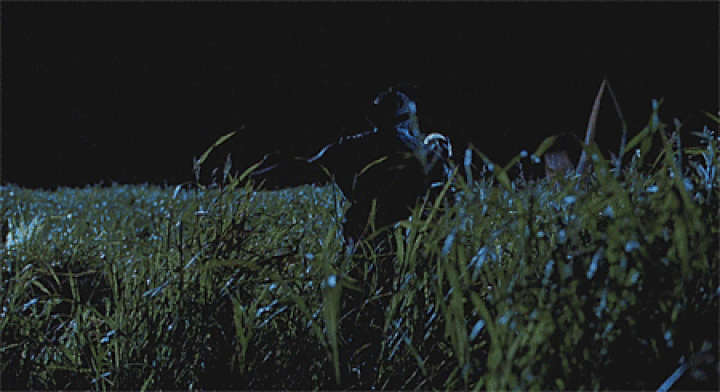
The eating habits of Velociraptor once making a successful kill have not been observed, though it’s likely they share the meals with numerous members of the pack by established hierarchy. Carcasses of prey and remains of uneaten food have not been observed by Velociraptor nests, suggesting they feed on the field, not bringing the meals back to their territory as not to attract other predatorial animals to where their young are situated. As such, adult Velociraptors may even regurgitate food like modern birds to feed their babies, though this remains entirely speculative.
Nests and Breeding
Velociraptors are territorial animals, who establish nests rarely left out of sight. As they congregate in large packs, their nests often contain numerous broods of young from multiple parents, arranged on the ground in circular clutches. The entire pack is dedicated to caring for the young, as led by the alpha females.

Both V.1 and V.2 Velociraptors have been observed with nests in the wild on Nublar and Sorna respectively. Dr. Alan Grant made the discovery that the dinosaurs of Jurassic Park were capable of changing sex and breeding when he discovered the semi-recently hatched Velociraptor nest at the foot of large trees on Nublar. These distinct oval shaped eggs were surrounded by the the unique two toed pad prints caused by the raptors walking with their killing claw raised.
The V.2 egg nests are slightly more defined, housed in raised rounded mud mounds, surround by soft foliage such as grass. Multiple clutches were kept near one another, and while the nest was left alone long enough for humans to encroach on its territory and steal two eggs, raptors clearly observed the theft and took great pains to safely return the eggs home once tracked down.

The mating patterns of Velociraptor have yet to be observed, though there is likely some form of hierarchy which determines which males can mate with whom, as observed in many modern animals. This is further evidenced by the males sporting more vibrant colors, likely to attract their mates, while the females sport more practical colors for camouflage.
Whether or not crossbreeding can occur between the different subspecies has yet to be determined, though it stands to reason that their DNA is close enough to allow mating between the clans. Whether or not this has actually occurred, or what these naturally occurring hybrid animals would look like remains unknown. As Isla Sorna has not been seen since 2001, nor its wild dinosaur populations, it is very possible a new version of raptor now exists from the two subspecies fighting, interacting and even mating over time.

Raptor tribes collide in this fan art by Raph Lomotan
Survivors?
The status of the Velociraptors post the 2018 Mt. Sibo eruptions remains uncertain. Reports released by the Dinosaur Protection Group suggest Isla Sorna is abandoned, without any animals left on the island. I however remain unconvinced by the veracity of that report, as similar reports released by the DPG had easily refutable discrepancies. This seems to be the case of shoddy record keeping by Ingen, and even more likely, the company being misleading about their assets for liability purposes.
It seems entirely unlikely that no dinosaurs remain on Isla Sorna, even if their populations had been effected by relocation, poaching, and famine. Further, it is entirely possible animals were illegally relocated off island prior to the Lockwood incident of Nublar, including members of the various wild raptor populations.
Finally, while Blue was the last remaining Velociraptor on Isla Nublar belonging to the I.B.R.I.S. tribe, it was never confirmed she was the only raptor on that island. As we know wild raptors were breeding on the island during and after the fall of Jurassic Park, it is very possible remnants persisted in the restricted zone even after Jurassic World was constructed. When the volcanic eruption of Mt. Sibo caused cataclysmic damage to Nublar in 2018, that damage seemed to be reserved for the northern half of the island. While the living conditions may be dire, it is entirely possible populations of dinosaur persisted on Nublar post that new extinction level event.

Blue may be the only known Velociraptor persisting at this time, roaming Northern California, but it’s likely she has other packmates waiting to be discovered elsewhere in the world.
After all, life finds a way.

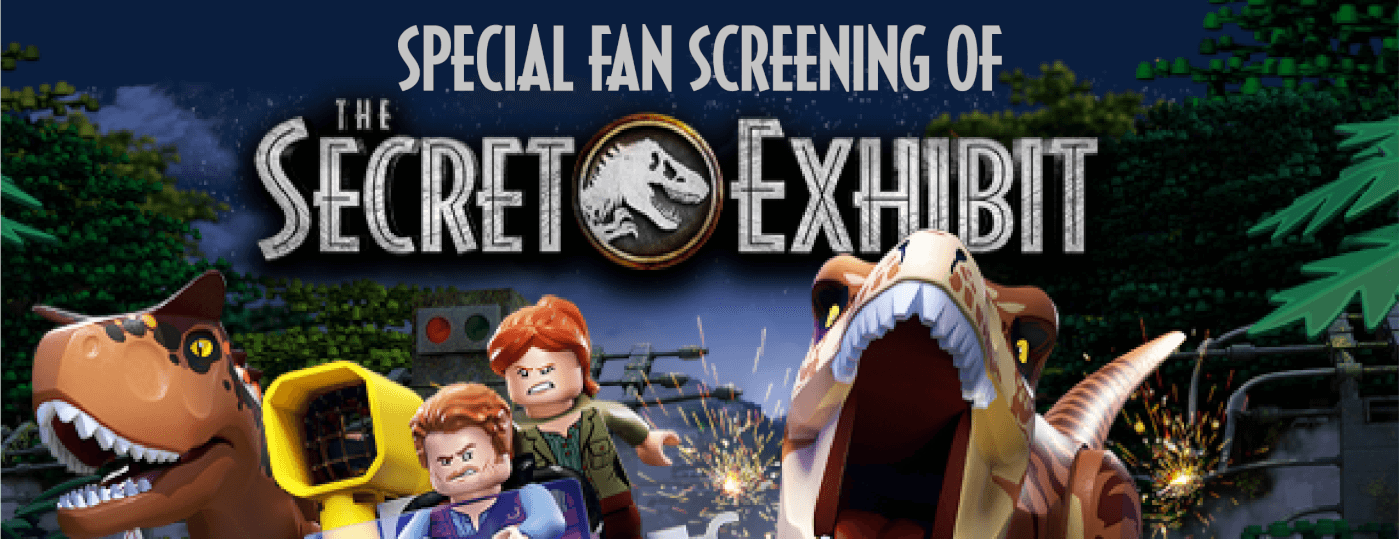
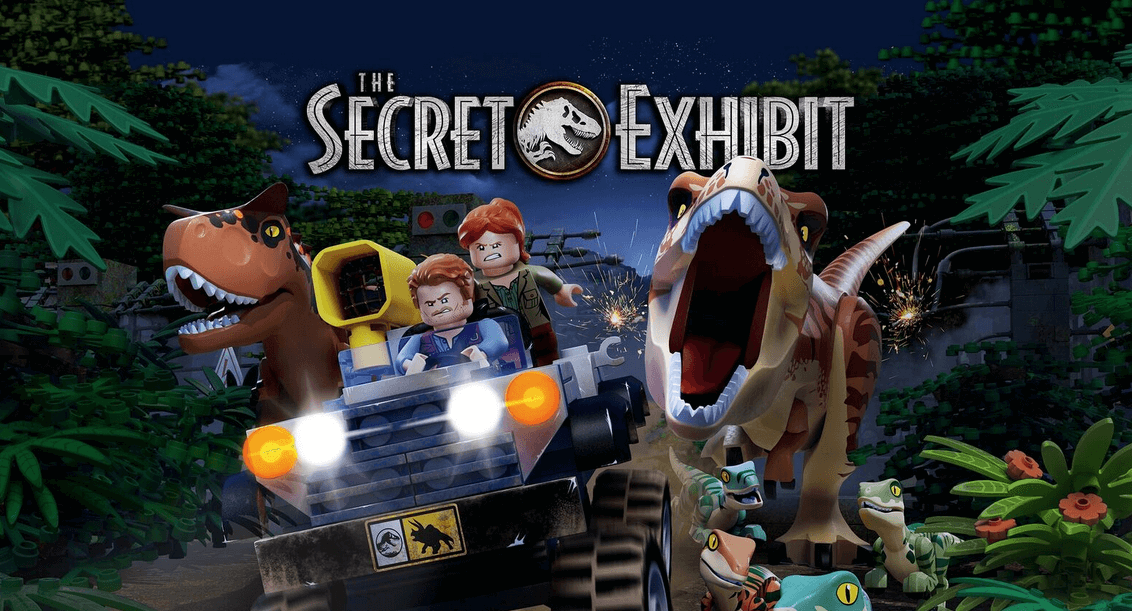



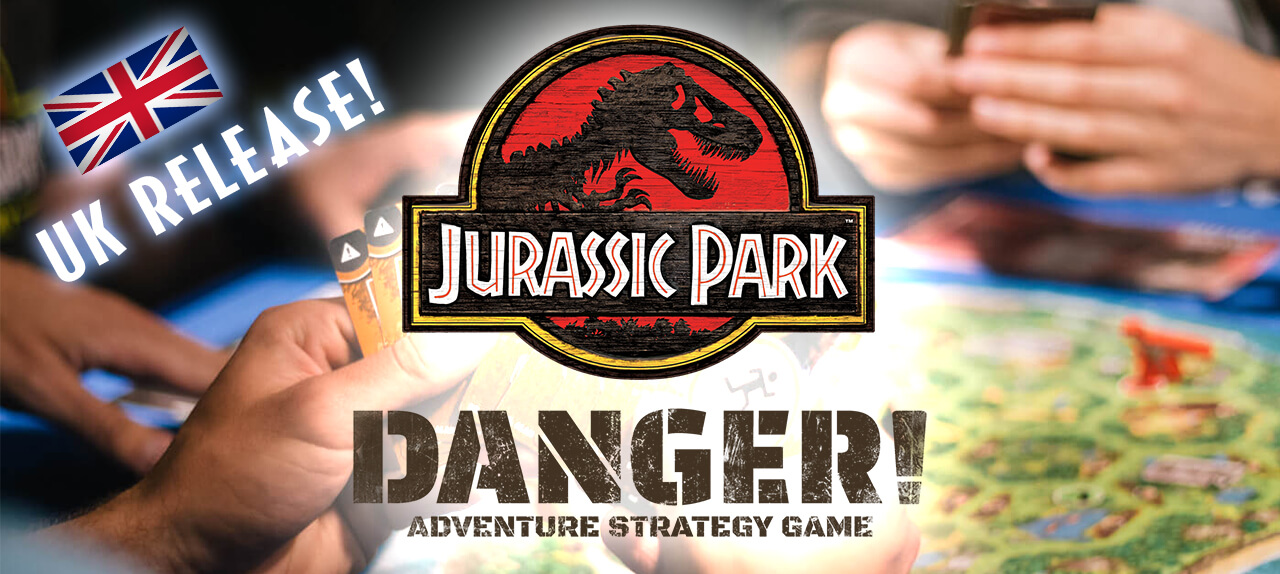

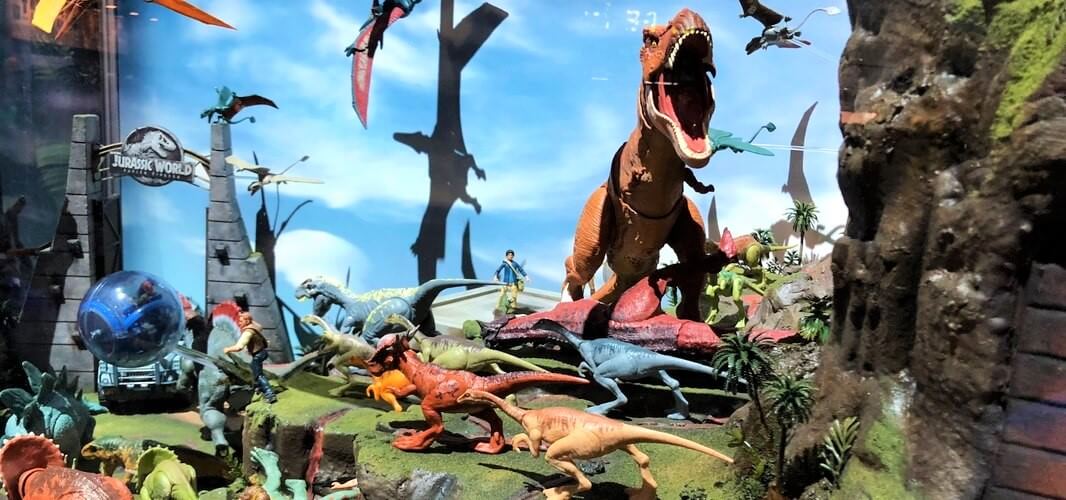



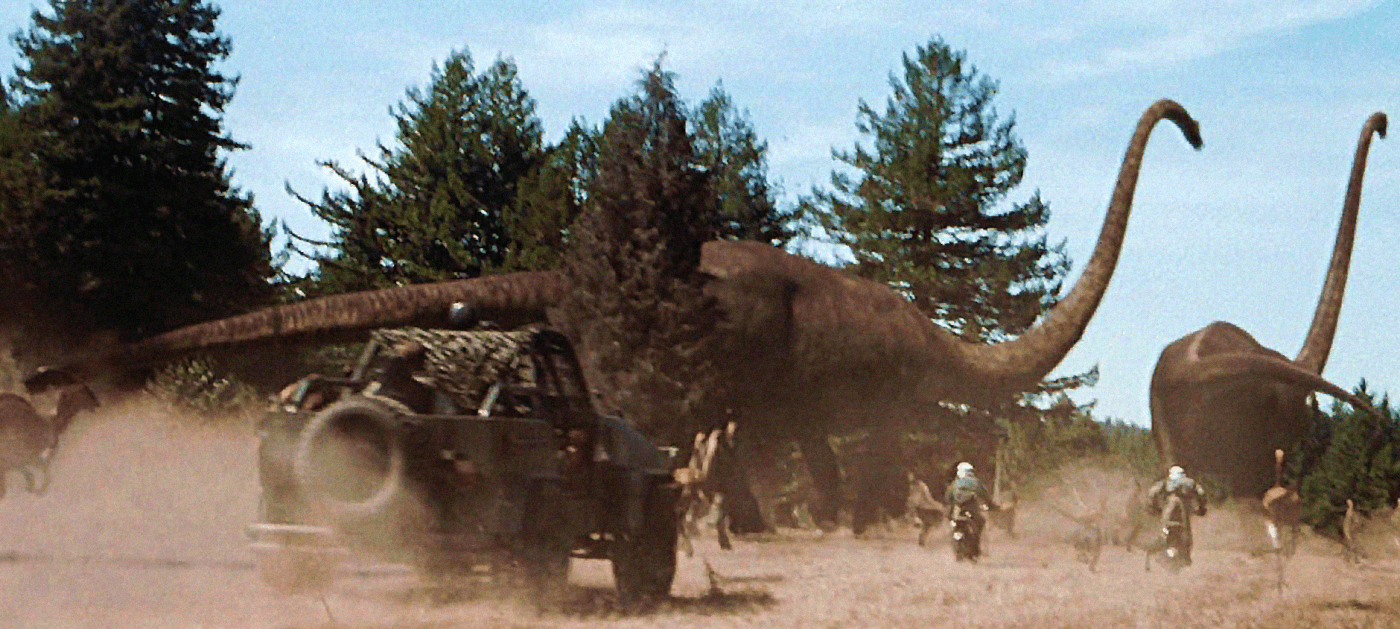


















































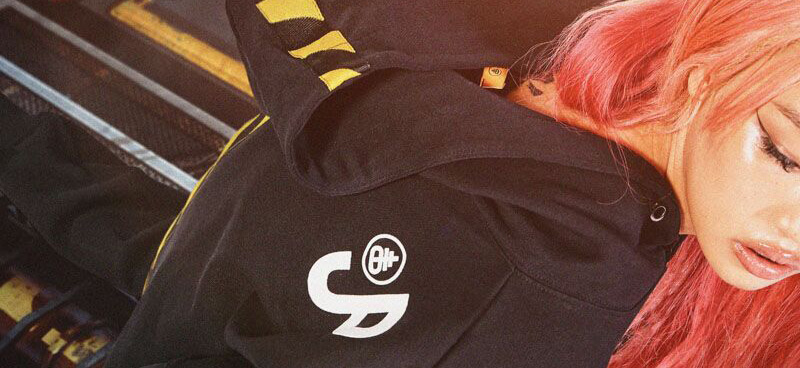








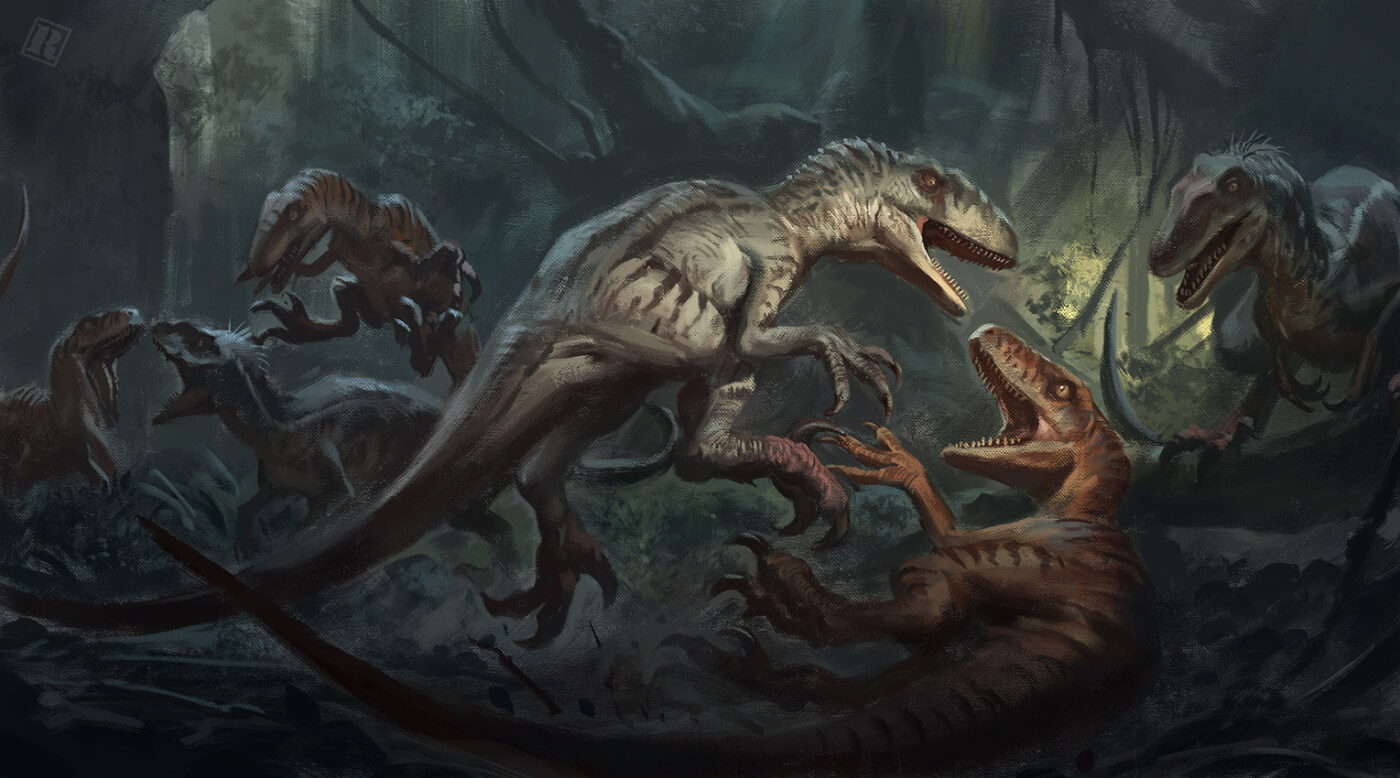

 All dinosaurs created for Jurassic Park by InGen were intended to be female, and as such these were the Velociraptor [initially] housed within Isla Nublar.
All dinosaurs created for Jurassic Park by InGen were intended to be female, and as such these were the Velociraptor [initially] housed within Isla Nublar. Natural born male V.1 raptors sport bright yellow eyes with skin more vibrant orange than their female counterparts, and a beige underbelly with less dark splotching overall. They’re easily distinguished from the female packmates as they are covered in vertical dark brown stripes, not entirely unlike that seen in Bengal Tigers.
Natural born male V.1 raptors sport bright yellow eyes with skin more vibrant orange than their female counterparts, and a beige underbelly with less dark splotching overall. They’re easily distinguished from the female packmates as they are covered in vertical dark brown stripes, not entirely unlike that seen in Bengal Tigers. The female V.2 raptors feature bright yellow eyes, with small round pupils. The eye socket is surrounded with a splash of vivid blood red skin, only seen elsewhere around their toes. Their skin is a semi-uniform cream color, with irregular charcoal brown covering its back from skull to tail, following the spine. From the spine there are occasional roughly defined vertical stripes, only slightly extending downward. From their ribs and hips below, small irregular horizontal striping occurs in blotchy patterns, also in the charcoal brown color.
The female V.2 raptors feature bright yellow eyes, with small round pupils. The eye socket is surrounded with a splash of vivid blood red skin, only seen elsewhere around their toes. Their skin is a semi-uniform cream color, with irregular charcoal brown covering its back from skull to tail, following the spine. From the spine there are occasional roughly defined vertical stripes, only slightly extending downward. From their ribs and hips below, small irregular horizontal striping occurs in blotchy patterns, also in the charcoal brown color. The male V.2 are immediately distinguished by their darker colors, horizontal milky stripe on either side running from skull to tail, striking red eyes with round pupils, and quill like proto-feathers protruding from the rear of their skull. Their skin is primarly a muted fleshy purple, molted with charcoal grey splotching of a similar tone. Their eye sockets are surrounded by vibrant blue skin, and the antorbital fenestra ridge highlighted by a brighter red color – this red can also be seen atop their skull, and around their fingers. Their underbelly is a yellow cream color that is occasionally interjected by the darker grey splotches.
The male V.2 are immediately distinguished by their darker colors, horizontal milky stripe on either side running from skull to tail, striking red eyes with round pupils, and quill like proto-feathers protruding from the rear of their skull. Their skin is primarly a muted fleshy purple, molted with charcoal grey splotching of a similar tone. Their eye sockets are surrounded by vibrant blue skin, and the antorbital fenestra ridge highlighted by a brighter red color – this red can also be seen atop their skull, and around their fingers. Their underbelly is a yellow cream color that is occasionally interjected by the darker grey splotches. Blue is a uniquely modified V.1.5 Velociraptor, infused with DNA from a Black-Throated African Monitor Lizard. She was bred as part of InGen’s Project I.B.R.I.S. and is the sole surviving member, following the Jurassic World incident in December 2015. Blue is the largest and stockiest raptor of the I.B.R.I.S. pack, easily identified by her scute covered face and striking blue stripe.
Blue is a uniquely modified V.1.5 Velociraptor, infused with DNA from a Black-Throated African Monitor Lizard. She was bred as part of InGen’s Project I.B.R.I.S. and is the sole surviving member, following the Jurassic World incident in December 2015. Blue is the largest and stockiest raptor of the I.B.R.I.S. pack, easily identified by her scute covered face and striking blue stripe. Charlie is a uniquely modified V.1.5 Velociraptor, infused with DNA from a Green Iguana. She was bred as part of InGen’s Project I.B.R.I.S. and was the first ‘Raptor Squad’ casualty during the Jurassic World incident in December 2015.
Charlie is a uniquely modified V.1.5 Velociraptor, infused with DNA from a Green Iguana. She was bred as part of InGen’s Project I.B.R.I.S. and was the first ‘Raptor Squad’ casualty during the Jurassic World incident in December 2015. Delta is a uniquely modified V.1.5 Velociraptor, infused with the most Avian DNA out of the pack. She was bred as part of InGen’s Project I.B.R.I.S. and was the second ‘Raptor Squad’ casualty during the Jurassic World incident in December 2015.
Delta is a uniquely modified V.1.5 Velociraptor, infused with the most Avian DNA out of the pack. She was bred as part of InGen’s Project I.B.R.I.S. and was the second ‘Raptor Squad’ casualty during the Jurassic World incident in December 2015. Echo was a V.1.5 Velociraptor who’s unique DNA attributes were not cataloged. She was bred as part of InGen’s Project I.B.R.I.S. and was the final ‘Raptor Squad’ casualty during the Jurassic World incident in December 2015.
Echo was a V.1.5 Velociraptor who’s unique DNA attributes were not cataloged. She was bred as part of InGen’s Project I.B.R.I.S. and was the final ‘Raptor Squad’ casualty during the Jurassic World incident in December 2015.





